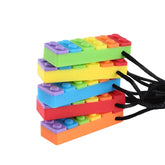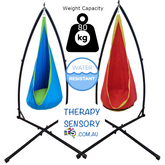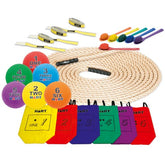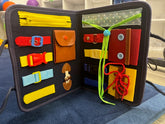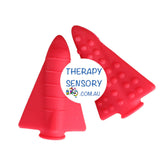20
- 10
- 15
- 20
- 25
- 30
- 50
Best selling
- Best selling
- Price, low to high
- Price, high to low
- Newest
Sort
Sort by:
- Best selling
- Price, low to high
- Price, high to low
- Newest
-
No reviewsThe Mini Parachute is a versatile therapeutic tool designed to enhance a variety of developmental skills in children. This 1.8m diameter parachute, made from sturdy nylon with 6 handles, fosters: Gross motor skills: through dynamic movements such as lifting, lowering, running, and jumping. Coordination...
- $55.20
- $55.20
- Unit price
- / per
-
No reviewsJunior Sports Day Kit: Enhancing Motor Skills, Teamwork, and Social Interaction This Junior Sports Day Kit provides a valuable collection of tools for enhancing motor skills, social interaction, and cognitive development in children. Kit Components: Jumping Bag Set: These jumping bags promote gross motor...
- $450.00
- $450.00
- Unit price
- / per
-
No reviewsThis Bubble Push Pop Pencil Case offers a multi-sensory experience that can support fine motor skills, self-regulation, and organization. The "push pop" bubbles provide tactile and auditory feedback as they are depressed and released, offering a satisfying sensory experience. The repetitive popping motion can...
- $14.00
- $14.00
- Unit price
- / per
-
Alphabet Bean Bag Set: Enhancing Fine Motor Skills, Visual-Motor Integration, and Cognitive Development This Alphabet Bean Bag Set is a valuable tool for enhancing fine motor skills, visual-motor integration, and cognitive development in young children. Fine Motor Skills: Hand-Eye Coordination: Throwing, catching, and manipulating...
- $89.00
- $89.00
- Unit price
- / per
-
1 reviewThe busy board is made of soft felted wool which is flexible with no hard corners, non-toxic and safe, light weight and durable, suitable for kids to use. The lightweight handbag design of this busy board allows kids can carry and use it in...
- $30.00
- $30.00
- Unit price
- / per
-
No reviewsBy helping to calm an overwhelmed nervous system, this chewable pencil topper supports your child’s ability to think more clearly and manage challenging tasks, facilitating the development of emotional self-regulation. Designed to add fun and color to their classroom, the silicone chew pencil topper...
- $9.95
$9.95- $9.95
- Unit price
- / per
-
No reviewsSensory-Themed Writing Boosters: Monster Edition Unleash your inner writer and engage your senses with our Scented Pencil Toppers & Monster-Themed Pencils—a fun tool for grounding, focus, and creative expression! This isn't just a pack of pencils; it's a multi-sensory experience designed to make therapy work,...
- $30.00
- $30.00
- Unit price
- / per



